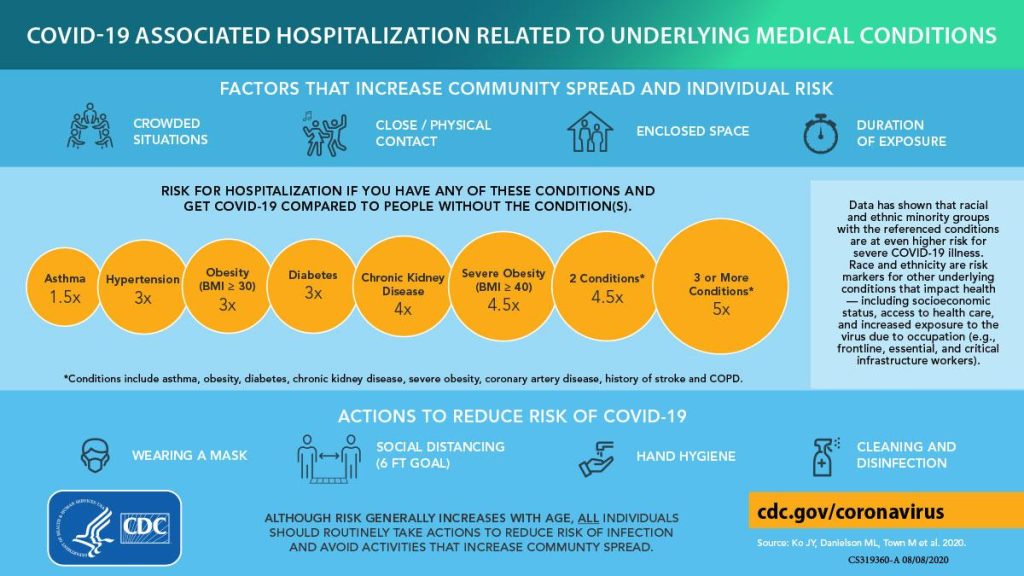
By Brandon Martin
Data over a four–day period showed a higher death rate for individuals with the coronavirus (COVID-19) in the West Piedmont Health District, according to local officials.
Nancy Bell, public information officer for the district, said that she attributes the higher death rate to the number of cases in long-term care facilities.
“They are more vulnerable,” she said. “Some staff in these facilities also have underlying health issues so it’s not just the residents.”
Bell said that two of the major reasons for the increase in cases for the area are “people that are supposed to be in quarantine aren’t staying home” and “people still aren’t wearing facemasks like they should be.”
According to Bell, contact tracers work with individuals who have been diagnosed with COVID-19 for the entire duration of their case, but this doesn’t always solve the problem.
“If people don’t tell you the truth, you can only do what you can do based off of the information that people give you during the interview,” she said. “You’ll have some people tell you that they don’t have any family and then, you go and look on Facebook and they have four or five family members who they could have come in contact with.”
Bell added that the district’s efforts to lower the spread and subsequent increase in deaths is greatly affected by the data obtained by contact tracers.
As of Aug. 21, the West Piedmont Health District had 14 deaths out of 723 cases in Henry County, three deaths out of 271 cases in Martinsville, nine deaths out of 193 cases in Patrick County, and one death out of 197 cases in Franklin County.
For overall cases, the West Piedmont Health District also has the 14th highest fatality rate compared to per capita deaths throughout various health districts in Virginia.
According to data from the University of Virginia Weldon Cooper Center, the 2019 population for the combined localities in the district was 140,478. When looking at cases per 100,000 cases, the health district posted a fatality rate of 103. Death rate, as a percentage of the overall population was 0.019 percent, tying the locality to Richmond at 18th highest in the state.
Dr. Mohammad Fasahat, a hospitalist at Sovah Health-Martinsville, provided information on the link between underlying health conditions and hospitalizations during a recent weekly update.
He said those with underlying health conditions such as “any sort of lung problems, including asthma or having a history of smoking,” or “a history of high blood pressure, diabetes, any kidney problems, or any combination of these problems,” would have a higher chance of being admitted into the hospital if they also contracted COVID-19.
According to data from the CDC, those with asthma are 1.5 times more likely to be hospitalized after contracting COVID-19. Those with hypertension, diabetes or that are considered obese are three times more likely to be hospitalized. Individuals with chronic kidney disease are four times as likely and those considered severely obese are 4.5 times more likely.
Fasahat said that the factors that increase community spread and individual risk are “crowded situations, close physical contact which will include not wearing your mask in close proximity with people, enclosed spaces and an increased duration of exposure.
“In general, the more closely you interact with others and the longer exposure of that interaction takes, the higher risk of COVID-19 spread,” he said, and added that between both Sovah facilities in Danville and Martinsville, staff are handling 35 cases of COVID-19.
“Around 15 of them are in Danville and the rest are in Martinsville. We do have more than adequate capacity to manage all patient needs at this time in both campuses,” he said.
Since the numbers haven’t decreased over the past couple of weeks, Fasahat said that the hospital’s limited visitation will remain in effect.
“We completely understand how difficult this is for family members not to be able to visit their loved ones when they are in the hospital and we really appreciate your cooperation and your understanding of the current situation,” he said.
Fasahat reiterated some common steps that can be taken to lower the numbers and get the visitation policy back to normal.
“The most important things remain to continue to wear your mask, continuing to socially distance yourself at least six feet apart when you are outside,” Fasahat said. “Hand hygiene — the most important of which is to wash your hands with soap and water as many times as possible. Next best is to use hand sanitizer or any disinfectant or wipes.”




